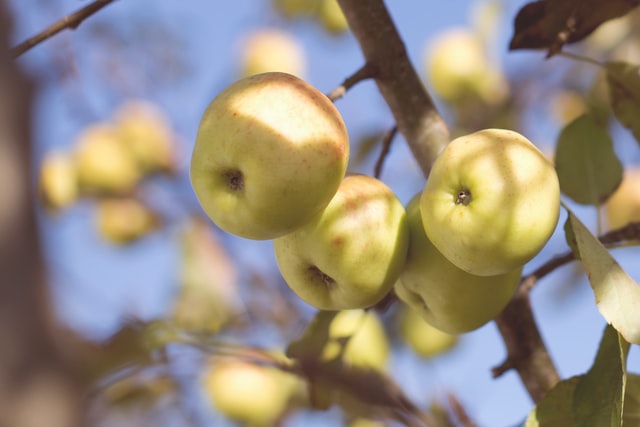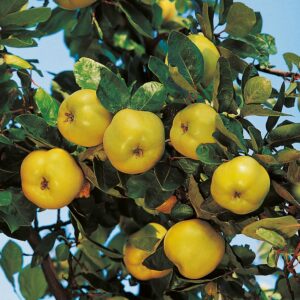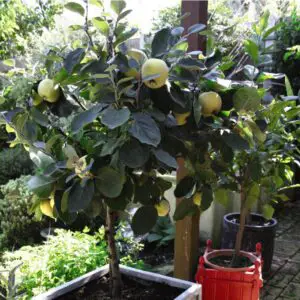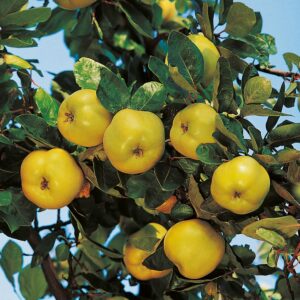Dwarf quince trees produce fruits very similar in appearance to pears and the bright yellow shades will brighten your garden space. Quince fruit can be harvested from October time and before this you can enjoy the green foliage and white or pink flowers.

After picking your quinces you should leave them for around 6 weeks before using them. A glut of quinces is a great opportunity for making membrillo, jellies, jams, and fruit purees.
One of the advantages of owning a dwarf quince tree is that you can enjoy the lovely scented flowers right from your back door.
As well as this, you can move it around as you see fit, and it’s very easy to take care of throughout the year. Fruit trees don’t just belong in huge gardens and dwarf quince trees fit perfectly in compact spaces. They are hardy and can grow plentiful crops, often producing the most fruit by year five.
Jump To...
Growing Dwarf Quince Trees
Dwarf quince trees are grafted onto dwarfing rootstock so will never grow taller than 2 metres. This goes for container grown quince trees or ones you opt to plant straight into the ground.
If you don’t have enough space in your garden to dedicate a border to fruit trees, patio quince trees can be grown in pots!
- Soil: Fertile and moisture retentive soil
- Watering: Regular watering is required
- Feeding: Apply a general fertiliser in February and mulch the base of the tree in the early spring.
- Rootstock: Dwarfing rootstock
Common Problems
- Leaf Blight: Often triggered by wet summers, leaf blight can affect the overall growth and the crop size. Signs of this disease include dark spots on the leaves and this can cause discolouration and leaves may drop off early. To ease the severity of leaf blight, you should rake up any leaves that drop off and maintain good garden hygiene.
- Caterpillars and Aphids: Insects are often attracted to fruit trees and do cause extensive damage in severe cases. You will be able to visibly see where they chew through leaves and fruit. By encouraging natural predators such as birds and ladybirds, you can help keep numbers lower.
- Fire Blight: A disease much more prevalent in the US, there are some rare cases of fire blight here in the UK. The cooler climate tends to keep this disease at bay but signs include the tree and fruit resembling the appearance of being scorched.
Pruning Dwarf Quince Trees
One of the reasons people opt for a dwarf fruit tree is the minimal care and pruning it requires.
It stands to reason that the bigger the tree, the bigger the job to care for it. Dwarf quince trees need little care and are hardy too.
When to Prune
Pruning tasks should be carried out during the dwarf quince tree’s dormant season. By pruning between November and March, you won’t do any damage to the new growth.
How to Prune
Dwarf quince tree pruning will require you to remove any damaged or crossing branches. You will want to keep your tree in a nice shape, allowing plenty of light to get through. Fruit buds form on the tips of the branches so be aware of this when removing any.
FAQ’s
Many people choose to grow their dwarf quince tree in a container to maximise the space they have available. As long as the diameter is at least 24” then your quince tree will have plenty of room to grow.
Dwarf quince trees are grafted onto dwarfing rootstock meaning they will stay 2 metres or under. Any pruning will be to retain its shape, not to reduce the height.
You will want to use a well-drained soil of good quality and fertile. It’s best to avoid chalky soils as they don’t like these much.





